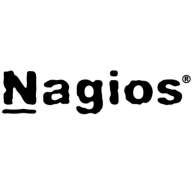

Nagios XI and LogicMonitor compete in the IT monitoring sector. LogicMonitor seems to have the upper hand due to its ease of deployment and robust features, despite Nagios XI's cost-effectiveness and customization options.
Features: Nagios XI provides customizable plugins to monitor a wide range of services, has a flexible IT monitoring approach, and supports real-time alerts. LogicMonitor offers comprehensive dashboards, supports advanced features, and enables extensive use of LogicModules for detailed monitoring.
Room for Improvement: Nagios XI could benefit from built-in clustering and failover support, simplified installation processes, and a reduction in the dependency on additional plugins for extended functionalities. LogicMonitor could improve its reporting capabilities, enhance dashboard functionalities, and offer more customization options.
Ease of Deployment and Customer Service: Nagios XI offers strong community support and requires manual configuration efforts. LogicMonitor provides a seamless deployment experience with a robust support structure, making it appealing for large environments.
Pricing and ROI: Nagios XI attracts users with its open-source core and affordable enterprise options, ensuring a quick ROI, particularly for small setups. LogicMonitor’s premium pricing reflects its advanced features, providing significant value and reducing operational overhead.
If the user interface isn’t presenting data well, it becomes difficult to manage when scaling.
It is very stable.
Many tools have poor user interfaces, making them hard to manage and navigate.
The GUI could be improved. It's a bit too basic.
We are using the free, open-source version.
The pricing for the Nagios XI product is good and better than other solutions.
Nagios XI simplifies our setup and reduces the time spent configuring monitoring tools.
The alerting system is very effective.


LogicMonitor provides infrastructure and network monitoring, alerting, and reporting across environments like AWS, Azure, and on-premises.
LogicMonitor aids businesses and managed service providers in maintaining system health, performance, and availability. It supports various technologies including Citrix, Cisco Voice systems, operating systems, virtual machines, and network devices. Businesses benefit from dashboards and data insights for proactive management, customizable data sources, and integration with third-party applications like Slack or ServiceNow. AI technology enhances monitoring capabilities by recognizing normal behavior and updating monitored elements, while multiple monitoring features consolidate data sources into one interface.
What are LogicMonitor's key features?
What benefits or ROI should users expect?
LogicMonitor is utilized across diverse industries by managed service providers to ensure seamless monitoring and management of clients' systems. This includes application performance monitoring, manual topology mapping, SLA calculations, and improvement of role-based permissions. Companies also seek enhanced resources view, better collector upgrade processes, and streamlined customization for monitoring from the repository.
Nagios XI provides monitoring of all mission-critical infrastructure components, including applications, services, operating systems, network protocols, systems metrics, and network infrastructure. Third-party add-ons provide tools for monitoring virtually all in-house and external applications, services, and systems.
Nagios XI uses a powerful Core 4 monitoring engine that provides users with the highest levels of server monitoring performance. This high degree of performance enables nearly limitless scalability and monitoring powers.
With Nagios XI, stakeholders can check up on their infrastructure status using the role-based web interface. Sophisticated dashboards enable access to monitoring information and third-party data. Administrators can easily set up permissions so users can only access the infrastructure they are authorized to view.
Nagios XI Benefits and Features
Some of the benefits and top features of using Nagios XI include:
Reviews from Real Users
Nagios XI stands out among its competitors for a number of reasons. Several major ones are its integration options and monitoring abilities, as well as its alerting features.
David P., a senior DevOps engineer at EML Payments Ltd, writes, “We use Nagios as a network discovery tool. We use Nagios to maintain our uptime statistics and to monitor our services. It has allowed us to be much more sophisticated in our monitoring and alerting.”
An IT-OSS manager at a comms service provider notes, “Nagios XI has a custom API feature, and we can expose custom APIs for our integration. This is a great feature.”
We monitor all IT Infrastructure Monitoring reviews to prevent fraudulent reviews and keep review quality high. We do not post reviews by company employees or direct competitors. We validate each review for authenticity via cross-reference with LinkedIn, and personal follow-up with the reviewer when necessary.